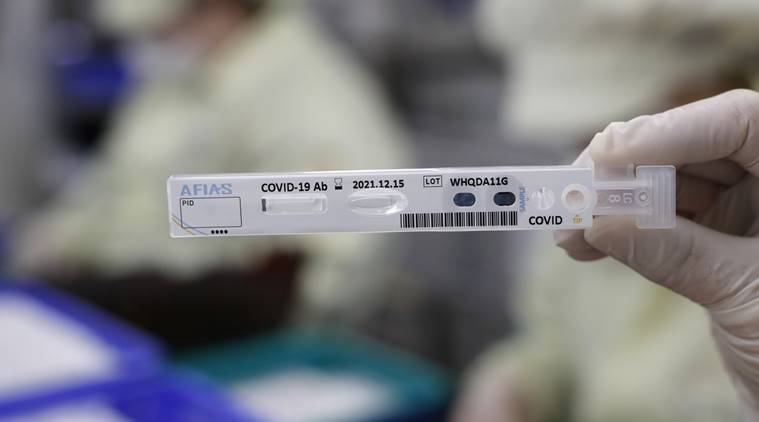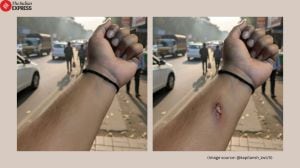Three weeks on, health officials yet to pinpoint how Jalandhar’s first 6 patients got infected
For at least six cases, which were among the initial patients who tested positive in the district, health officials still haven’t managed to come to a clear conclusion regarding how they got infected.
 According to the Punjab government’s daily report, until April 24, a total of 10,611 samples have been taken from the state till date, of which results of 2,003 are awaited, including 671 (33.4 per cent) awaited in Jalandhar itself. (Representational)
According to the Punjab government’s daily report, until April 24, a total of 10,611 samples have been taken from the state till date, of which results of 2,003 are awaited, including 671 (33.4 per cent) awaited in Jalandhar itself. (Representational)
With one new case, Jalandhar’s tally of coronavirus patients increased to 63 on Friday. The pendency of test results is the highest in the district as compared to other districts of Punjab.
For at least six cases, which were among the initial patients who tested positive in the district, health officials still haven’t managed to come to a clear conclusion regarding how they got infected. These patients transmitted the coronavirus to around 50 persons in Jalandhar.
According to the Punjab government’s daily report, until April 24, a total of 10,611 samples have been taken from the state till date, of which results of 2,003 are awaited, including 671 (33.4 per cent) awaited in Jalandhar itself.
Sources in the health department said samples collected by the medical staff of Jalandhar are not sent the same day for testing, due to which pendency rate of results is high here.
What is more worrisome for the district is that the health department has no exact details about the source of infection of the initial cases of Jalandhar.
These six cases are — a 72-year woman from Nijatam Nagra, who was cured at Christian Medical College and Hospital, Ludhiana, 59-year-old man from Mitha Bazaar, who had died at Jalandhar Civil Hospital, a 42-year-old woman from Bhiaron Bazaar, a woman from Old Sabzi Mandi area, a man working in a hospital at Maqsudan, and an employee of a local media house. Of 63 cases, around 50 patients are the contacts of all theses earlier cases.
Health department officials said that these patients have no travel history. Also, there is no clear cut information about their source of infection.
The media house employee, a 40-year-old man from Raja Garden Colony who works for a daily vernacular newspaper, had spread the infection to 29 more persons including 18 from the same media house, four from his family, and other contacts.
The first case from this media house was reported on April 13. Following this, 29 more persons in his chain tested positive in next 11 days till Friday.
Till Thursday, the health department has taken the samples of nearly 200 persons related to this media house and the process is still going on. They are yet to determine how the first patient from here got infected.
Civil Surgeon Dr Gurvinder Kaur Chawla said the department has been trying its best to get all the details of every patient, but these initial patients are giving different statements. “The Nijatam Nagar patient was one of the earlier cases in Jalandhar and the family first told us that the woman had gone to some religious congregation close to their house and then they also said they had some guests from Italy but nothing clear was mentioned about it,” said the civil surgeon, adding, “In the Maqsudan case, the family said the infected person used to visit the houses of several patients including NRIs to conduct physiotherapy sessions, but there is no contact of any NRI available with us. People should provide the exact history instead of confusing the health department,” she added.
65% cases are aged upto 50 yrs in Punjab
In Punjab, 65 per cent of patients who are infected from coronavirus are upto 50 years of age, and out of this, majority belong to the 21 to 40 years age group.
According to the Punjab government’s COVID-2019 status report, 35 per cent of COVID-19 patients belong to 21 to 40 years of age, including 17 per cent who are 21 to 30 years and 18 per cent who are of 31 to 40 years of age while 14 per cent are 41-50 years of age. There are 6 per cent and 9 per cent cases of 0-10 years and 11-20 years, respectively.
Health department sources said it is generally seen that people of a young age have more chances of recovery than the old who have several underlying health complications.
As per this report, there are 35 patients in the category of 50-80 years which included 20 per cent of 51-60 years, 10 per cent 61-70 years, and 5 per cent are 71-80 years of age.
Apart from this 59.4 per cent of patients are from urban areas and 40.6 per cent are from rural areas of the state. More men have been infected than women.







